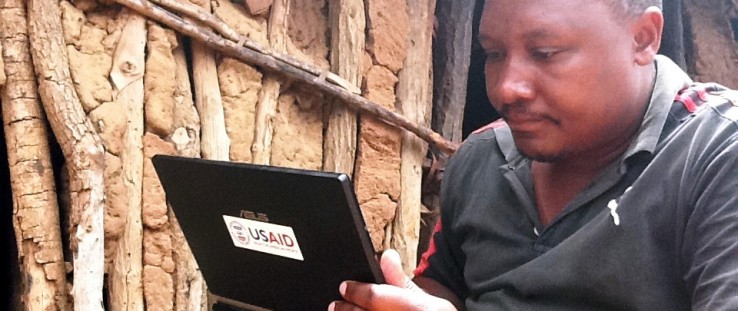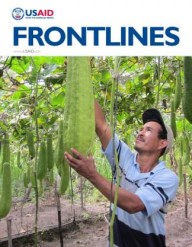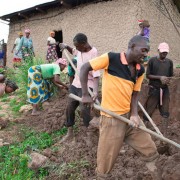 A USAID-trained enumerator uses a tablet to collect information for a Feed the Future baseline survey.
Joshua Mike, USAID
A USAID-trained enumerator uses a tablet to collect information for a Feed the Future baseline survey.
Joshua Mike, USAID
 A USAID-trained enumerator uses a tablet to collect information for a Feed the Future baseline survey.
Joshua Mike, USAID
A USAID-trained enumerator uses a tablet to collect information for a Feed the Future baseline survey.
Joshua Mike, USAID
Through Feed the Future, the U.S. Government’s global hunger and food security initiative, efforts are underway in 19 focus countries, several of which are in East Africa, to strengthen agricultural development skills and promote broad-based economic growth. In 2012 alone, USAID/Tanzania provided $24.6 million to government systems and local partners in support of these efforts, which will help Tanzania achieve its goal of becoming a middle-income country by 2025.
One such project is a partnership with the Tanzanian National Bureau of Statistics to strengthen agricultural statistics in the country. The project takes a two-pronged approach that provides a $1.1 million grant to support conducting a Feed the Future baseline survey, and an additional grant to help finance a U.S. study tour for 11 statisticians to enhance their skills.
“It is virtually impossible to develop and implement sound agriculture policies without access to statistics on poverty, malnutrition and annual data on total food production for the population,” said Tom Hobgood, the Feed the Future senior adviser in Tanzania.
The $1.1 million grant included training and access to innovative technology for 120 enumerators throughout Tanzania to conduct a 2011 baseline agricultural survey. Prior to the use of this unique technology, which included GPS devices, 30 solar backpacks and 130 electronic tablets, all statistics in Tanzania were collected with pen and paper—and the data could take years to aggregate.
The new tools, equipped with Web-based software, provide access to agricultural statistics for all Feed the Future indicators, including stunting, poverty, per capita expenditures in agriculture, exclusive breastfeeding and anemia rates. Following completion of the survey, the tools were transferred to the National Bureau of Statistics to use for future data collection.
As a result of the new technology, the data collected was more accurate, and much more quickly available to statisticians. The Government of Tanzania lauded USAID for introducing this technology which will allow for more reliable information about the country’s 46 million inhabitants.
In conjunction with trainings on application of the new technology, in October 2012, 11 Tanzanian officials traveled to Washington, D.C., and to Purdue University on a two-week study tour of U.S. agricultural operations and statistical training. Participants learned about organization, methodology and program management for preparing official agricultural statistics.
“The lessons learned during our U.S. study tour are countless. In addition to improving our skills, knowledge and working experience, we had ample opportunity to correlate techniques used in agriculture statistics data collection, compilation and dissemination in the U.S. compared to Tanzania. Most of the data collection techniques used in the U.S. are more statistically sound than our systems and we learned how to enhance our systems,” said Mwalim J. Mohammed, head of agriculture and environmental statistics, Office of Chief Government Statistician, Zanzibar.
After the learning tour, statisticians were better equipped to design and collect more accurate and reliable agriculture data, which are used to make policy decisions about regions with food surpluses or deficits. This information is key to identifying populations that may need assistance. The statisticians can also better understand how to achieve more accurate statistics on key agriculture and livestock commodities.
USAID/Tanzania Mission Director Sharon Cromer is a strong advocate for developing statistical skills in Tanzania. “Investing in the training and skill development of agriculture statisticians will raise the bar for data gathering throughout Tanzania,” she said, “which not only leads to food security and holistic agriculture sector growth, but also to more accurate information in all sectors in Tanzania.”












Comment
Make a general inquiry or suggest an improvement.